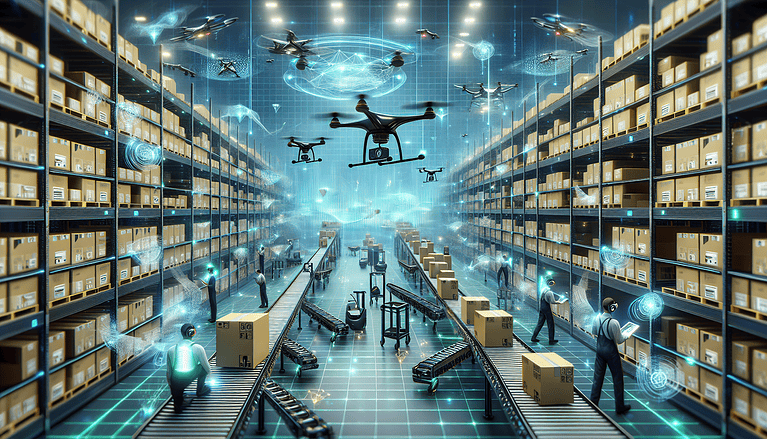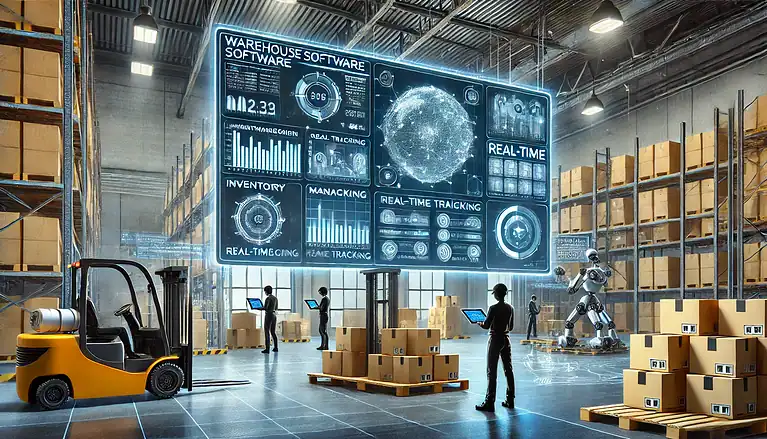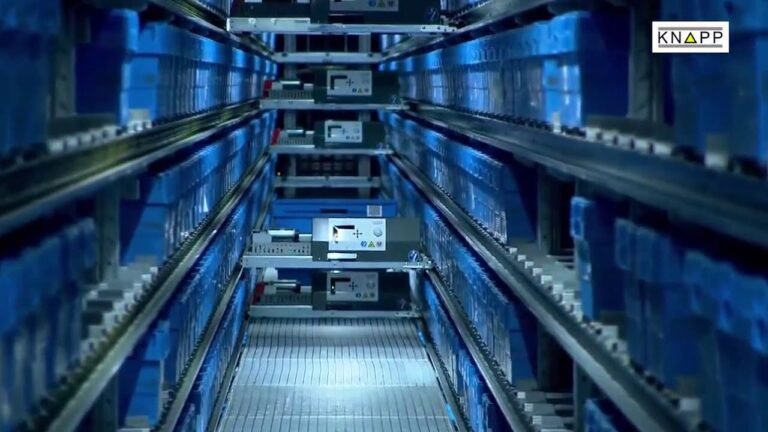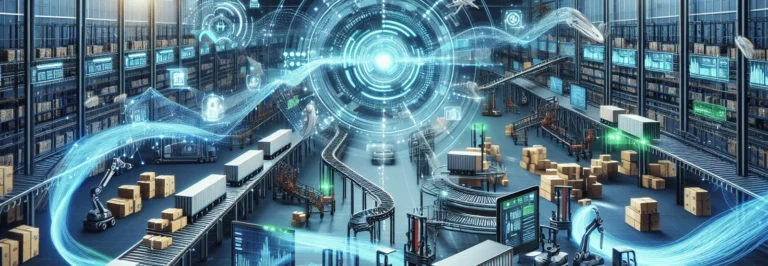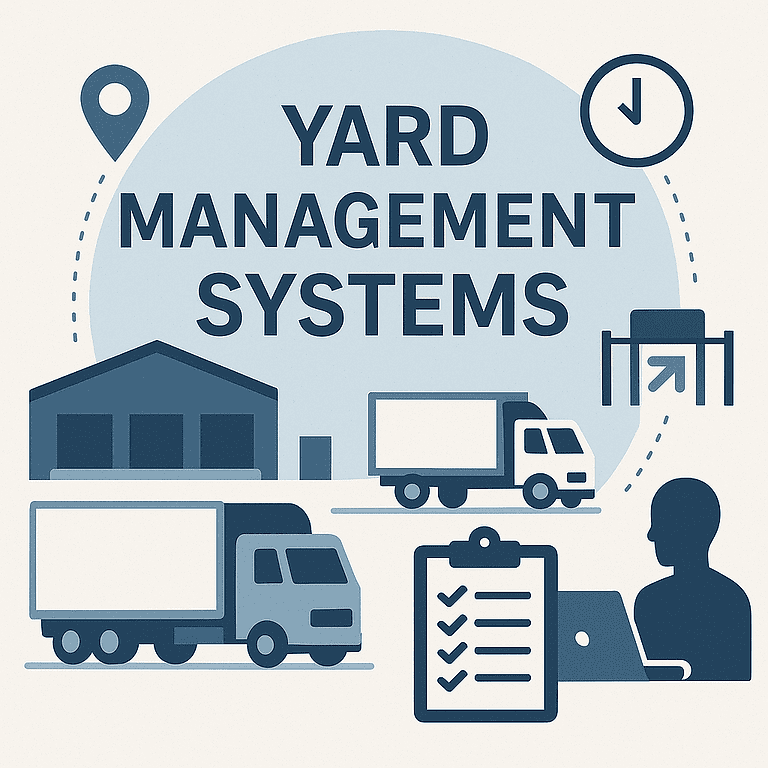Robot in Warehouse Operations: Urgent Shipping, Happy Customers 2025
Warehouses are buzzing with a new kind of worker: the robot. But are these machines taking all the jobs? Not quite! This article dives into the world of robots in warehouses. It explores how they are improving operations.

We’ll explore the types of robots taking center stage. They range from zippy inventory movers to tireless pickers and packers. Learn how these machines boost efficiency. They also improve safety and order speeds. And, they do it all without jargon. Plus, we’ll offer insights on how to adapt to this exciting technological shift in the warehouse!
Table of Contents
Key Takeaways
Warehouse robots, such as AS/RS, AGVs, AMRs, and cobots, boost efficiency. They also make work safer and improve morale. They do this by taking over tasks that are repetitive and high-risk.
Advanced technologies, like machine learning, AI, and computer vision, let warehouse robots learn. The robots can also adapt. They can make decisions on their own, cutting human error and boosting productivity.
Adding robotics to Warehouse Management Software (WMS) makes operations smoother and more efficient. It also helps with data-driven decision-making. This leads to better stock management and customer satisfaction.
Exploring the World of the Robot in Warehouse Ops
Enter the world of self-driving robots and automated warehouses. Automation rules there. These smart devices are changing logistics and taking over jobs once done by humans.
They range from automated storage and retrieval systems to independent moving robots. These prodigies boost warehouse operations. Their benefits include increased operational efficiency, heightened safety measures, and boosted employee morale.
Now, let’s look at what these robots can do in warehouses, including your average warehouse robot. This will give us a glimpse into their big impact on industry practices.
Types of Robots Deployed in Warehouses
Imagine a scenario in which these systems execute the mundane chores of managing stock. This is the current landscape of warehouse robotics.
AMRs and AGVs are leading roles in this field. They are autonomous mobile robots and automated guided vehicles. AGVs operate on fixed pathways guided by lasers, markers, and sensors. However, AMRs offer more flexibility by adapting paths spontaneously.
This technological evolution extends even further.
To these innovations, collaborative robots (or cobots) have sensors and safety mechanisms. They allow for safe operation alongside human workers.
The Impact of Robots on Warehouse Efficiency
Warehouse robots are the ultimate game-changers for enhancing operational efficiency. Imagine a warehouse where tedious and repetitive tasks are automated.
Here, robots work tirelessly around the clock, enhancing productivity and reducing labor costs. During peak seasons, when demand is high, these tireless machines are worth their weight in gold.
They assist with a variety of tasks in the warehouse, including:
Inventory checks
Picking tasks
Sortation
Loading
Transportation
By performing these tasks, they improve overall warehouse operations. They also have safety features, which reduce human error and physical strain on workers. They also have smart safety protocols. The result is a safer and more efficient warehouse.
Advancements in Robotic Technology
Warehouse robots have become very smart. This is because they now use artificial intelligence and machine learning, which allows them to learn, adapt their actions, and make decisions. They do this using data analysis.
In pharmaceuticals, vision systems combined with machine learning improve quality control.
Sophisticated sensors and precise placement mechanisms enable labeling machines to find the position and orientation of products exactly, which is key for accurate label placement.
These tech enhancements show the precise nature of robotics in warehouses. They boost efficiency and accuracy while cutting human mistakes.
Autonomous Mobile Robots: Revolutionizing Logistics

Let’s delve into the game-changers of this narrative – AMRs. These smart devices have an arsenal. It includes machine learning, AI, and many sensors. This advanced tech ensemble empowers them to traverse and change warehouse terrains autonomously.
Warehouses that use AMRs will cut labor costs a lot. They will also reduce mistakes and improve their operations. This will amplify material handling efficiency and bolster customer satisfaction.
AMRs are redefining operations like never before. They streamline order-picking and advance zone-picking. They also enhance goods-to-person delivery systems. They even tackle autonomous piece-picking duties or administer flexible sorting tasks efficiently.
Navigation and Adaptability
Artificially intelligent AMRs are the quintessence of flexibility. They steer seamlessly through warehouses. They use advanced vision systems, laser guidance, and fiducial markers. These tools let them do their work with precision.
These robots have many sensors, including cameras and LiDAR. The sensors help them make their travel path and maps. These are key for moving around obstacles in changing warehouses.
They adapt easily to new setups without changing infrastructure. They also improve task execution. They do this using swarm communication intelligence. They also learn from experience.
Adding thermal and haptic sensors to their design lets AMRs to tune to their surroundings. This is possible thanks to AI and machine learning.
This integration gives AMRs advanced self-navigation. It works in complex operations.
Collaboration with Human Operators
AMRs are intended to work in tandem with human operators, not supplant them. Their role is to partner with humans, bolstering productivity through cooperative efforts.
By doing monotonous tasks, the human workforce can focus on more intricate duties. These tasks need the judgment and cognitive abilities unique to humans.
AMRs and humans work together well. They boost output and employee morale.
Automated Storage and Retrieval Systems (AS/RS)
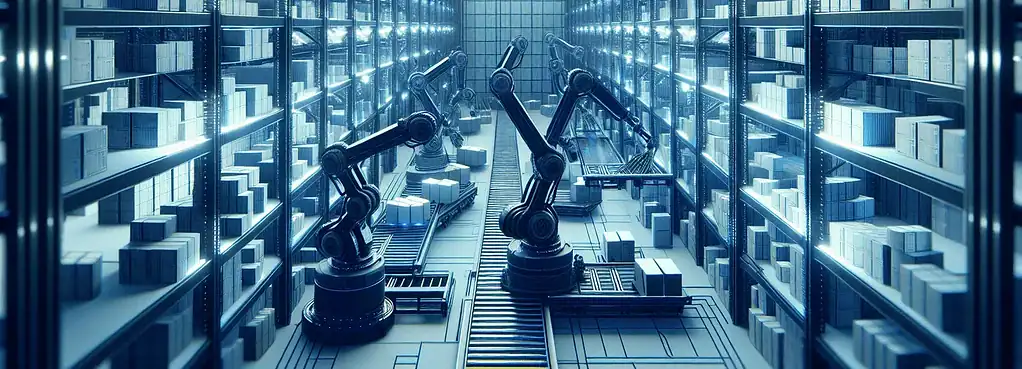
AS/RS systems revolutionize inventory management. They change how items are managed in storage. Operated by computer-controlled systems, they autonomously store and fetch goods in warehouse settings.
This greatly improves inventory handling forms. For example, vertical lift modules maximize space through vertical storage. And, horizontal carousels suit warehouses with low ceilings. These examples show the innovative approaches AS/RS brings to managing stored items.
Boosting Inventory Accuracy
AS/RS systems are designed to epitomize precision. Automating inventory tracking and the update process bolsters the preciseness of stock records.
These systems work with light-directed picking technologies and message centers. They reduce errors. They do this by showing the exact location and quantity for picking tasks. This helps them achieve an impressive accuracy rate, as high as 99.9%.
AS/RS systems automate inventory data management. This greatly boosts efficiency and cuts the hours spent on manual inventory work.
Enhancing Storage Utilization
Space efficiency is key in a warehouse. AS/RS technologies are great at improving it. Warehouse robots are equipped with AS/RS capabilities. They can greatly expand storage capacity by using a facility’s height.
These dense storage solutions use vertical space and close packing to save up to 85% in storage space.
Assessing whether the racks work is critical. It helps us add the robots to existing systems. This evaluation ensures that the machines can use space well. It also ensures they can access items well within their environment.
The Synergy of Collaborative Robots

Collaborative robots, often called cobots, are changing warehouse operations and revolutionizing existing processes. The tools are designed to work with humans, not to replace them. They easily fit into many workplace roles.
They help with many tasks. These include doing quality inspections and packaging items.
Cobots improve order processing. They do this by making it easier to move selected orders within a warehouse. This includes sorting and packaging areas.
Human-Robot Workforce Integration
Incorporating collaborative robots, or cobots, into a mixed human-robot workforce is intriguing. These cobots have smart sensors. The sensors allow them to recognize and move around humans and obstacles. This preserves the safety of human employees during warehouse operations.
Their deployment created new job roles. It also boosted worker contentment by reducing physical strain.
The use of warehouse robots extends beyond co-existence with human laborers. It includes tasks done in dangerous settings. They can help reduce risks for humans there.
Handling Repetitive and Dangerous Tasks
Cobots excel at handling monotonous and dangerous tasks. For example, automating loading and unloading trucks is labor-intensive. It poses various risks. Cobots can do these jobs quickly. They speed up work and keep humans safe from injuries.
Streamlining Fulfillment Operations with Palletizing
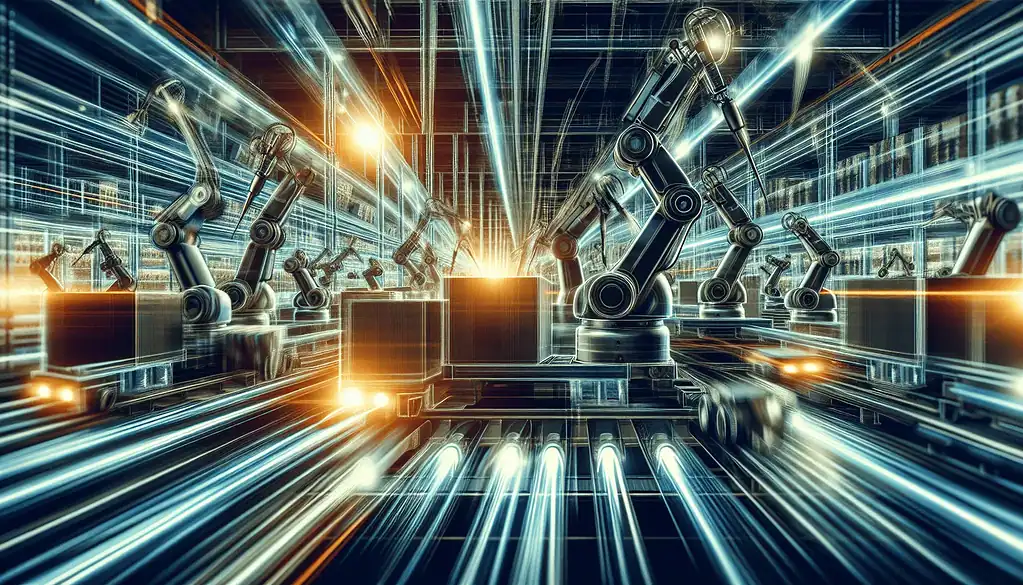
Palletizing and depalletizing robots are key. However, they are often overlooked parts of warehouse operations. These automated systems:
Use a robotic arm and a product gripper. They’ve picked up and placed products for stacking.
Execute the opposite function when it comes to unstacking items.
Provide adaptable options tailored to varied product assortments.
Greatly enhance productivity levels through automation.
We should delve into how these robots deliver tailor-made solutions. They are suitable for various products and boost efficiency. They do this thanks to their integration within automated systems.
Increasing Throughput with Automated Systems
Automated palletizing and depalletizing systems are remarkably efficient, providing significant benefits such as:
Enhanced precision and regularity in operations
Diminished reliance on human labor
It can manage the throughput from many production lines at once. This increases cost-efficiency by using economies of scale.
Some robotic palletizers are specialized. They have the strength to handle very heavy items. These items sometimes weigh over 100 pounds.
Robotic bag palletizers are designed for fast performance. They can handle up to 20 bags per minute. This speeds up the order fulfillment.
Leveraging Unmanned Aerial Vehicles (UAVs)
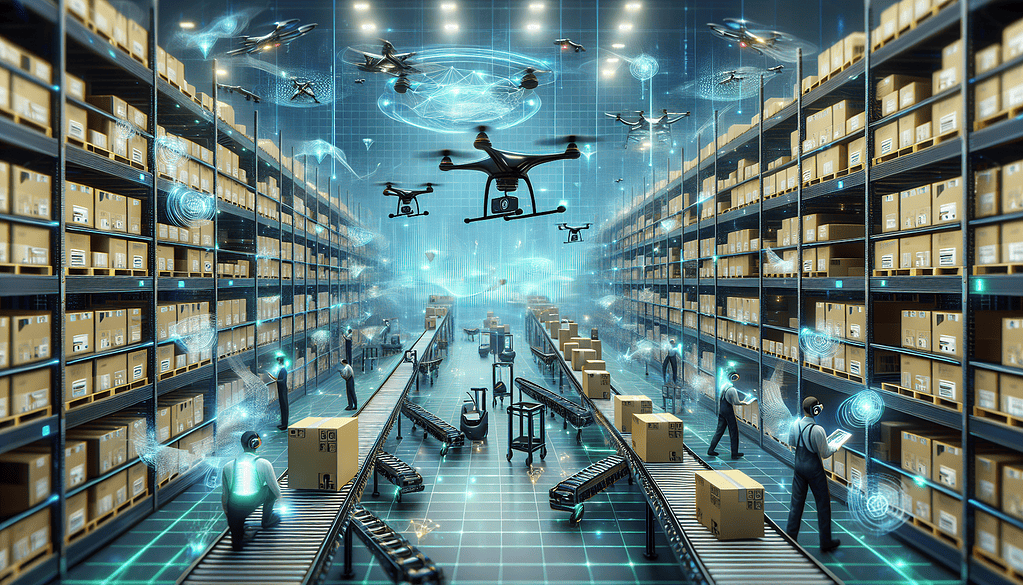
UAVs, also known as drones, are making a big splash in warehouses. The machines capture inventory images. They help with retrieval tasks. They are indispensable in large and challenging warehouses.
Drones have excellent cameras. They are good at scanning narrow and tall aisles. So, they are ideal for keeping track of stock.
Using drones for inventory audits, cycle counting, and stock maintenance can cut costs. They do this by cutting the need for manual labor and extra equipment. This happens during inventory checks.
Advanced Scanning Capabilities
Utilizing drones equipped with cutting-edge scanning technology has revolutionized inventory management within warehouses.
The UAVs use deep learning and computer vision. They adeptly move through the warehouse and airspace to do their duties.
Thanks to onboard sensors and cameras. They are used for fast inventory checks in a warehouse.
They excel at precisely cataloging stock items. They ensure that even hard-to-reach spots are thoroughly accounted for. This greatly improves inventory management.
Maximizing Safety and Reducing Labor
Using UAVs in warehouses enhances safety. They cut the dangers of manual inventory audits at heights and reduce work accidents.
Drones are used for inventory. This eases the strain on employees who reach high shelves. It also cuts down on the traffic on the warehouse floor.
These adjustments increase security. They also save a lot on labor.
Conveyor Systems: Integration with Robotic Systems
Robotic systems and conveyor systems are closely intertwined. Conveyors can be customized to handle many products based on their shape, size, and weight. This makes them more effective when paired with robots to streamline business processes.
Conveyor systems are key to the sorting and workflows of distribution centers. They do more than move items. These systems can handle a range of product sizes and weights. They make it easier to move things in warehouses.
It works with technologies like sensors, barcode scanners, and sorting machines. This raises the efficiency of warehouses.
Adding conveyor systems to warehouses cuts task times. It also reduces congestion. This optimization leads to an elevation in the fluidity of workflow processes.
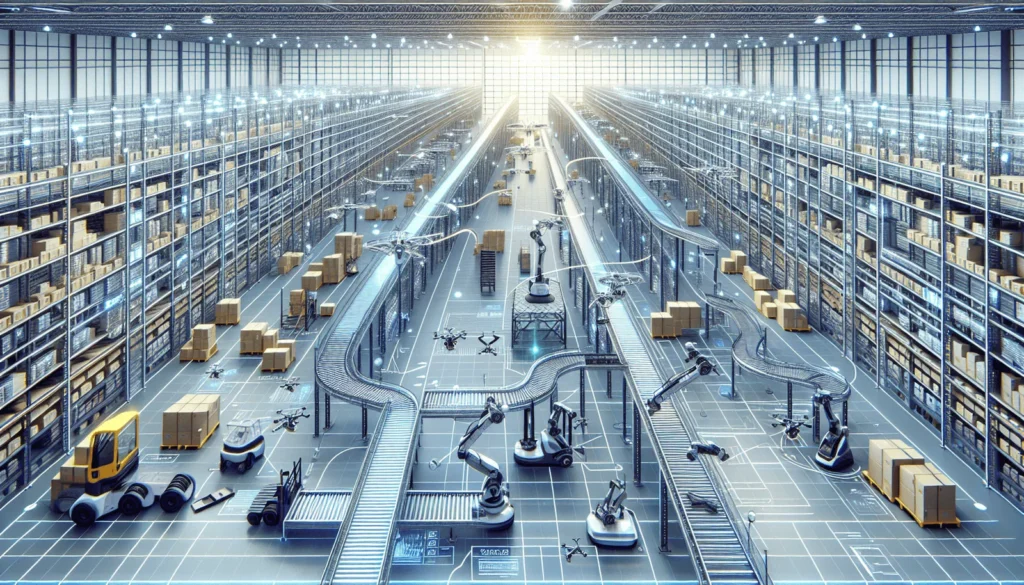
Robotics and Warehouse Management Software
Warehouse Management Software (WMS) and robotics in warehouse automation have a mutualistic relationship. WMS is the core conduit for operational data in warehouses. It optimizes efficiency and robotic task coordination.
Merging WMS with warehouse robotics is key. It helps firms aiming to upgrade their operations. Such integration leads to:
Amplified efficiency
Greater accuracy in fulfillment
Enhanced satisfaction among customers
Diminished operational expenses
Coordinating Robotic Operations
Warehouse Management Systems (WMS) are crucial in warehouses. They coordinate and manage tasks done by robots. This makes work faster and more efficient. Making robots work with current warehouse systems is seamless. Robots need to sync with the WMS to manage tasks and update inventory.
Modules in WMS platforms check stock levels. They also oversee warehouse operations, including guiding robotic systems. The execution system (WES) is part of WMS. It uses info from AMRs to map paths. This helps with decisions that improve navigation and task completion.
Data-Driven Decision Making
The supremacy of data within warehouse operations cannot be overstated. Precise inventory information comes from warehouse automation, which blends seamlessly with robotic tech. This is crucial for refining warehouse processes and fueling decisions.
Automated Storage/Retrieval Systems (AS/RS) gather real-time inventory insights. They improve stock control strategies. They allow the spotting of trends and adjusting to shifts in demand.
Palletizing robots have sensors and smart software. They use them to make wise choices informed by rich data. Drones are revolutionizing on-site surveillance in these spaces. They offer instant access to data and enable detailed tracking of products using various markers.
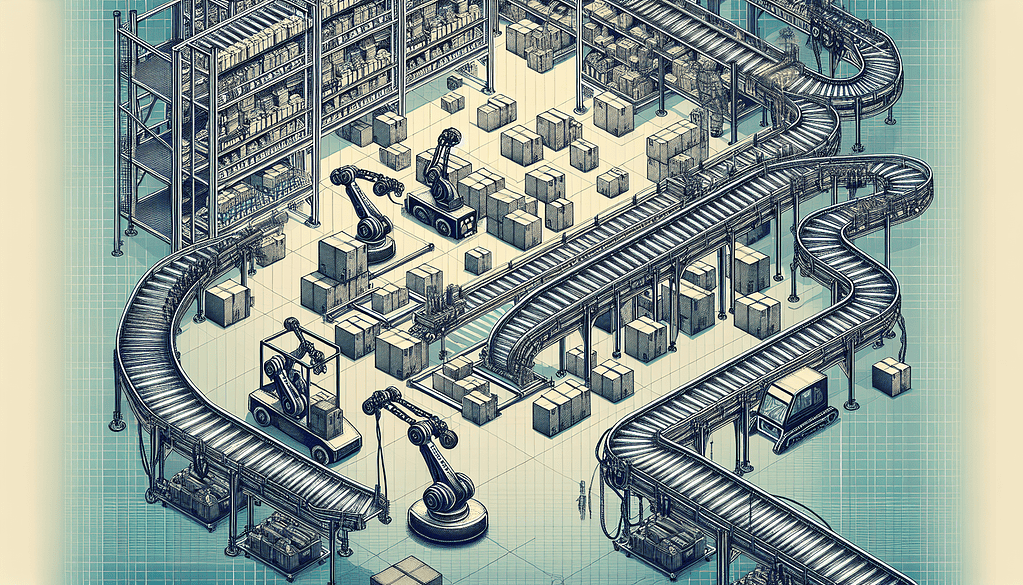
Transforming Logistics Facilities with Robots
Witnessing logistics facilities’ technology adoption is truly remarkable. Firms like FANUC offer many warehousing and collaborative robots (cobots). These robots are suited for diverse tasks, from storage to retrieval.
These innovations are key. They will revolutionize logistics centers, improve efficiency, and manage complex workflows.
Robot Integration Strategies
Integrating robots into warehouses is not simple. It requires a well-thought-out strategy. You can install warehouse robots quickly and customize them. They provide a fast solution for facilities and help them implement automation.
Cobots offers businesses a flexible capital expenditure model. It includes options to rent or purchase and is suitable for adjusting to demand variations.
A good integration plan should map warehouse layouts, define communication interfaces, and create protocols for data exchange. These are for seamlessly adding robots.
Before using mobile robots, do a full risk assessment. Eliminate pitfalls to merge seamlessly with existing operations.
Case Studies: Success Stories in Robotic Integration
As the adage goes, the true test comes from experience. We’ll examine a pair of studies showcasing successful implementations of robotic technology.
The international e-commerce giant Alibaba revolutionized its warehouse operations by using warehouse automation, including automated storage and retrieval systems (AS/RS).
This move has cut workforce needs by 70%. But, it has tripled output. It shows big gains in their warehouses’ efficiency and productivity.
These examples show that lasting success in automated warehouses comes from constant improvement and embracing cutting-edge advances. The integration of robotics into these settings underscores this commitment to ongoing progression.
Summary
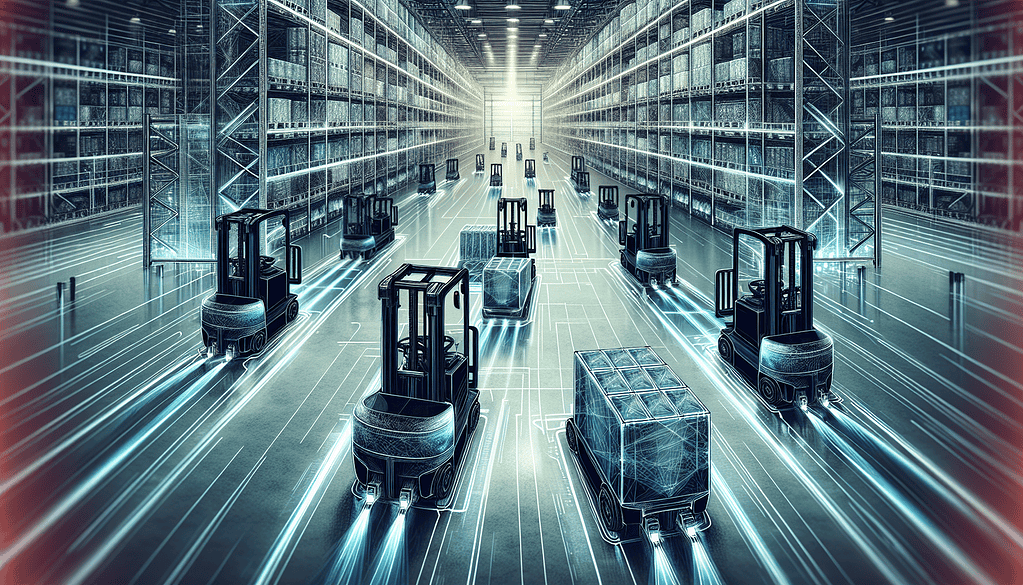
Robotics is driving big changes in warehouse operations. AS/RS is improving inventory management. AMRs are reshaping logistics.
Merging robots with warehouse management software ensures more effective and informed decision-making. Uncrewed aerial vehicles, alongside conveyor systems, are streamlining inventory handling and sorting processes.
As these innovations advance, we expect breakthroughs in warehouse automation. They promise a smarter, safer, and more efficient future for operations.
Frequently Asked Questions
What types of robots are used in warehouses?
Warehouses are home to many robots, including self-moving robots, which are called autonomous mobile robots. These robots are also called automated guided vehicles (AGVs), goods-to-person robots, and collaborative robots, which are also known as cobots. These robotic systems are vital in improving productivity and efficiency within such facilities.
How do warehouse robots enhance operational efficiency?
Robots in the warehouse boost efficiency by taking over repetitive tasks. This not only raises productivity but also cuts labor expenses. These robots play a vital role in many parts of the operations. They do inventory audits, handle picking and sorting items, load goods, and help move things in the facility.
How do AMRs navigate and adapt in warehouses?
They use laser guidance, sensors, and vision systems. They create detailed maps. These maps let them move easily and adjust in warehouses.
This progress supports the robots’ efficient travel across different warehouse parts. They are like automated guided vehicles without warehouse operators.
How do AS/RS systems improve inventory accuracy? How do they boost storage use?
AS/RS boosts inventory precision. It tracks and updates stock automatically. It also saves space by using up to 85% of a facility’s vertical space.
How is robotic integration transforming logistics facilities?
Robotic integration is transforming logistics facilities. It automates many tasks. This advance is leading to unmatched efficiency. It’s optimizing processes in these centers.


